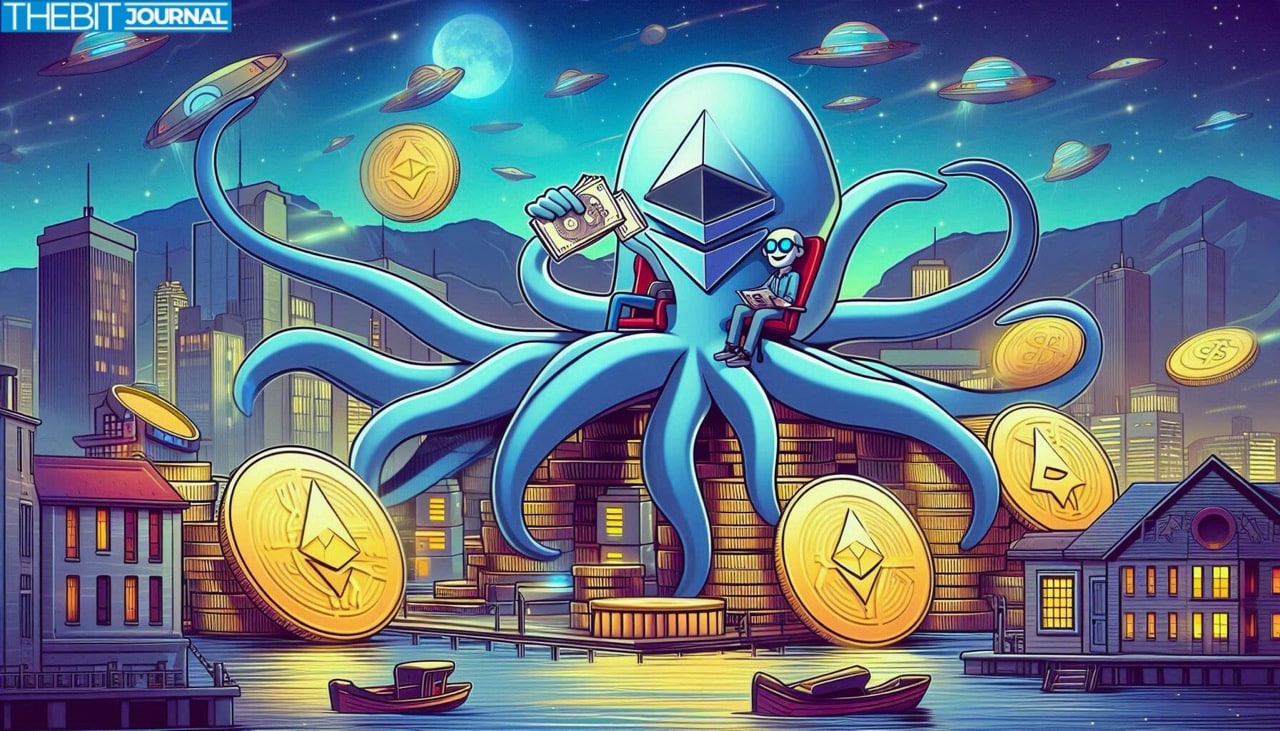Ethereum’s Skeletons Creep Out: Wilcke’s $262M Move Rekindles Insider Fears
0
0

Based on available reports, Ethereum co-founder Jeffrey Wilcke moved $262 million worth of ETH to Kraken on May 20, and the Ethereum community is buzzing. The on-chain transaction of 105,736 ETH is one of the largest known transfers from Wilcke and reportedly almost emptied his wallet, leaving behind 268.73 ETH.
Large Ethereum transfers from project insiders are not new, but this one stands out due to the timing, size and the withdrawals from Kraken. The event has sparked interest in Ethereum’s internal capital flows, especially with recent Ethereum Foundation (EF) sales and DeFi allocations.
Big Transfer Gets Network Attention, But Market Remains Cool
The transfer was first spotted by Lookonchain, a blockchain analytics platform, which found the receiving address to be a Kraken deposit wallet. Just minutes after Wilcke’s transfer hit the exchange, reports say 8 addresses started withdrawing large ETH amounts from Kraken, roughly the same $262 million.
These subsequent withdrawals have led some to think this might be an internal re- allocation of assets rather than a full liquidation. Analysts claim that the transactions might be “distribution to new storage addresses”, but no official statement has been made by Jeffrey Wilcke or the Ethereum Foundation.

Despite the size of the transaction, the price of ETH remained calm. As of press time, ETH was trading at $2,541, up 0.21% in the last 24 hours.
ETH has been strong in the last month, up 72% from the 2024 lows and reaching a recent high of $2,737.17 on May 13, according to CoinGecko.
Pattern of Insider Sales Raises Questions
Jeffrey Wilcke’s $262 million transfer follows earlier large sales from individual Ethereum founders and the Ethereum Foundation. In August 2024, the EF transferred $94 million worth of ETH to Kraken which raised questions across the community. At the time, Ethereum co-founder Vitalik Buterin replied to the concerns saying the funds were for organizations that contribute to Ethereum’s development. EF contributor Josh Stark later confirmed the foundation had “carefully considered” the decision to liquidate their holdings to fund ecosystem support.
But that didn’t answer the long-standing questions around governance and transparency. Some argue that recurring insider liquidations send mixed signals to retail investors, especially when the Ethereum Foundation has publicly discouraged ETH staking at scale.
In January 2025, the EF sold 300 ETH, worth around $981,200, according to Etherscan. Analysts note that although these amounts are small compared to the total supply of ETH, they often coincide with local price dips and can impact short-term sentiment.
Ethereum Foundation’s Yield Strategy Enters DeFi
More context to Wilcke’s transfer is the Ethereum Foundation’s recent foray into DeFi yield generation. In February 2025, the EF deposited 30,800 ETH, worth around $82 million, into Aave’s lending pool. They also deposited 10,000 ETH into Spark and 4,200 ETH into Compound.
According to crypto analyst Tom Wan, the expected annual yield from these allocations is around 1.5%, which is $1.5 million in passive income based on current prices. The EF’s move into DeFi lending protocols is a change of heart, especially after Vitalik Buterin previously cited legal risks and governance concerns as reasons for not staking at scale.

While Wilcke’s transfer doesn’t seem to be illegal, insiders point out that with increasing institutional presence, founders and core contributors will have to be more transparent and operationally accountable.
Conclusion
Jeffrey Wilcke’s $262 million transfer didn’t move the ETH price but it brought back the bigger questions around governance, transparency and insiders in decentralized systems. As Ethereum becomes an institutional asset, the community is still figuring out the balance between decentralization, funding and operational freedom.
With spot ETH ETFs launching soon and DeFi activity on the rise, these questions will be asked. Investors are watching, not just for market signals, but for signs that the protocol’s most influential stakeholders are living up to its core values of openness and accountability.
FAQs
Who is Jeffrey Wilcke?
Jeffrey Wilcke is one of Ethereum’s original co-founders. Less public than Vitalik Buterin, he was involved in the project’s early development and wrote most of the Go-Ethereum (Geth) client code.
Why did Wilcke move $262 million in ETH to Kraken?
As of now, Jeffrey Wilcke hasn’t said anything publicly about the transfer. Analysts think it might be internal asset management, portfolio diversification or offloading for fiat liquidity.
Did this move affect Ethereum’s price?
No, the ETH price remained stable. It was trading at $2,541 after the transfer, less than 1% intraday volatility.
How does this compare to Ethereum Foundation transfers?
Both Jeffrey Wilcke and the Ethereum Foundation have moved large amounts to Kraken, but only the EF has explained publicly. The EF has also started using DeFi to generate yield on its holdings.
Is Ethereum staking affected by this?
Not directly. But the Ethereum Foundation has previously cited legal concerns as the reason for not staking at scale. They have recently started using DeFi lending instead.
Glossary
ETH – The native cryptocurrency of the Ethereum blockchain.
Kraken – A U.S.-based cryptocurrency exchange for institutions and retail.
Ethereum Foundation (EF) – A non-profit supporting Ethereum’s development and ecosystem.
DeFi – Decentralized Finance; a blockchain-based financial system without intermediaries.
Aave, Compound, Spark – DeFi lending platforms where you can deposit crypto to earn interest or borrow against it.
Yield Farming – Staking or lending crypto to earn interest or rewards.
On-chain Data – Public data on the blockchain that can be used to track transactions and wallet activity.
Sources
Read More: Ethereum’s Skeletons Creep Out: Wilcke’s $262M Move Rekindles Insider Fears">Ethereum’s Skeletons Creep Out: Wilcke’s $262M Move Rekindles Insider Fears
0
0
 Manage all your crypto, NFT and DeFi from one place
Manage all your crypto, NFT and DeFi from one placeSecurely connect the portfolio you’re using to start.






